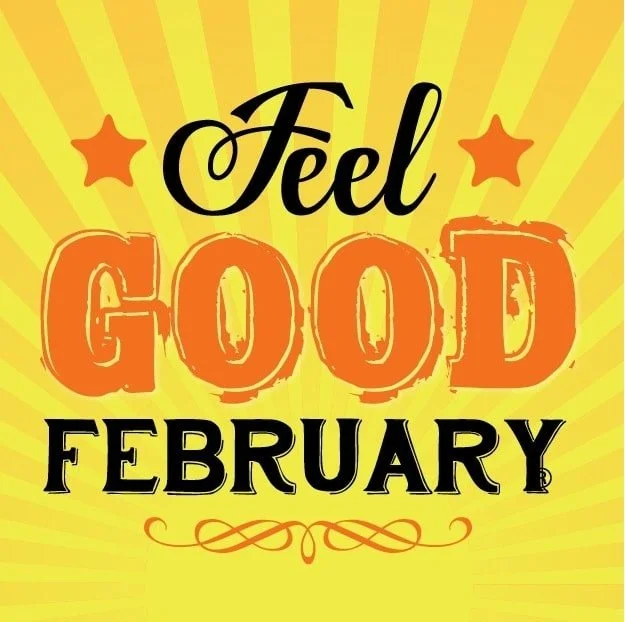Feeling Good in February…and every month for the rest of the year!
If a survey of the world was held there is no doubt music would be in the ‘Top 10’ of feel-good factors for humans (and maybe birds)…so this February blog comes with a soundtrack - press play to listen!
The rich beauty of music is that the lyrics often carry a message, they appeal to the listener in you, and can be a great teacher. Tune in as there is much to learn within Gotye’s ‘Learnalilgivinanlovin’…
Let’s LEARN a little GIVING and LOVING…
Linda Pang, founder of the ‘Feel Good Feb’ and ‘Kindness is Catching’ movements in Sydney, inspires us to have the intention and take the time to make others feel good. Linda’s website and Facebook page offer ideas and resources to use for your own Random Acts of Kindness (RAK) to gift to strangers not just in February, but all year round. Kind acts like secretly paying for the coffee of the person in line behind you at a Café, or leaving a small positive handmade present for a stranger at a bus stop.
But, why do giving and loving make us feel good? What does giving do for your brain?
Source: Feel Good Feb
Research into giving reveals the amazing specific brain benefits of providing social support to others. Most remarkable is that giving might actually be better for the giver than the receiver. fMRI studies show in the giver:
Reduced stress related activity in three key areas of the brain that respond to stressors, emotions, social interactions and perceived threats.
Greater reward-related activity in the decision making and reward areas of the emotional brain.
Greater caregiving-related activity in the brains ‘pleasure dome’.
A collaborative research study (from Harvard, UBC and the University of Virginia) gave college Students random envelopes containing $5 or $20 and assigned them to spend the money on either themselves or a friend. At the end of the day the amount did not count, it was those who gave it away that felt the best.
A fascinating QEEG Study pinpointed brain regions and specific brain wave activity in happy and loving states, with activation of areas of the left hemisphere, areas associated with positive emotions. QEEG Brain Scans are available in professional brain-based clinics and are used to highly personalise brain treatments that use sophisticated brain-computer interfaces to ‘strengthen’ or retrain the brain, to rewire for happiness.
So it is scientifically proven that altruism and giving support is great for the receiver and even better for the giver. We are wired to help. Helping and giving are acts of generosity and caring, some may call this altruistic acts of love. What is so wonderful is that there is more going on in the brain, at brain chemistry level, when we behave this way, and those little molecules help us to feel really good. It has been called the happiness trifecta of brain chemistry: Oxytocin; Dopamine and Serotonin.
Oxytocin – sometimes known as the ‘bonding molecule’ or the ‘cuddle chemical’. Associated with feelings of trust, closeness, empathy, kindness. Breastfeeding Mothers produce buckets of it. Cuddling your fur baby can increase levels of it in both you and your puppy. Low levels of oxytocin have been associated with depression.
Dopamine – known to some as the ‘reward molecule’. Released in the brain to reinforce rewarding behaviours.
Serotonin – branded the ‘happy chemical’, though serotonin has lots of responsibilities.
STOP!
We need to pause an important moment to consider giving SELF-LOVE here because these molecules don’t just make themselves. We need to feed, fuel, exercise and restore ourselves in ways that make it possible to make these and other brilliant things.
So, what stuff do we need for our bodies to make these ‘feel good’ fundamentals?
Oxytocin
You need a diet (and lifestyle) with foods rich in Vitamin D, Vitamin C, Magnesium and specific types of gut microbes (pre and probiotics). Enjoying a good quality morning coffee with friends can help. Don’t ever underestimate the powers of a good cuddle, sharing a meal, giving a gift and telling people you love them.
Serotonin
Serotonin isn’t in foods, but something else you need to make it is – tryptophan. It’s in Eggs, Nuts, Seeds, Cheese, Turkey and other Poultry. Remember too, most of your ‘feel good’ serotonin resides in your gut wall, your gut bacteria (the good guys in your gut) also help produce it, so this body part needs to be working well. You can get these good bacteria from foods, supplements and you can even get them gardening. Gardening is also great purposeful exercise, and gets you out in the sunshine where you can naturally make more vitamin D.
An important link between your gut and your brain is your long vagus nerve. You can calm and ‘massage’ this vital nerve through biofeedback techniques; meditation and breathing exercises.
Dopamine
Like serotonin, you can’t eat dopamine, but you can eat things that help along the way to making it – tyrosine. Some foods high in it are Bananas, Avocados, Apples, Fish and Beans.
The Greater Good Science Centre encourages all to practice daily gratitude. Gratitude can increase the release of dopamine and serotonin, all while rewiring your brain to make you more inclined to enjoy feelings of happiness.
You can also boost dopamine production by getting regular exercise (walking is fine, but if you feel the need to dance - go bust a move) and so can LISTENING TO MUSIC!
...and I think that’s a cue for a song…
About the author - Emily Goss, OT. Senior Clinician, The Perth Brain Centre.
Want More?
Click here to see the upcoming events at the Perth Brain Centre











